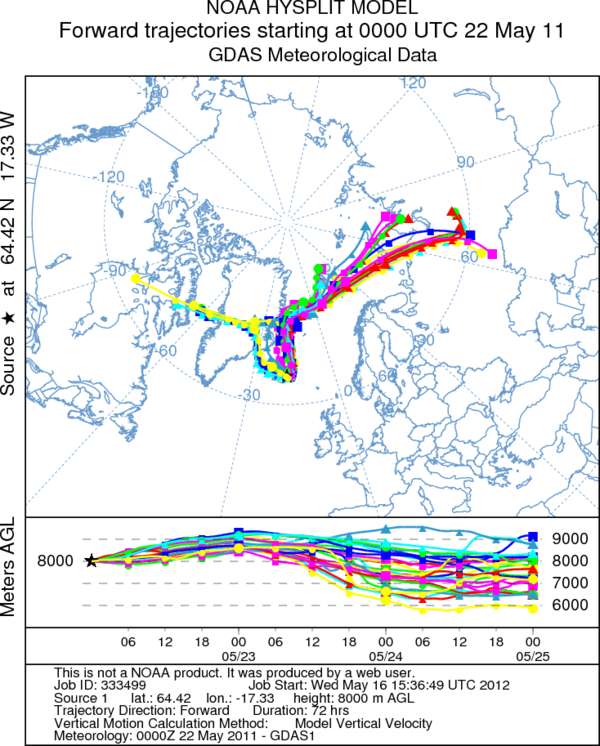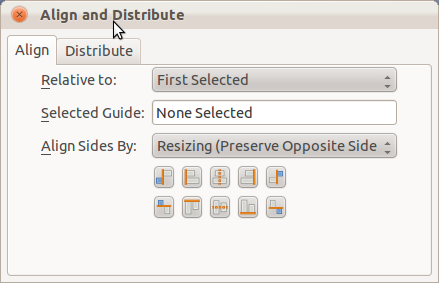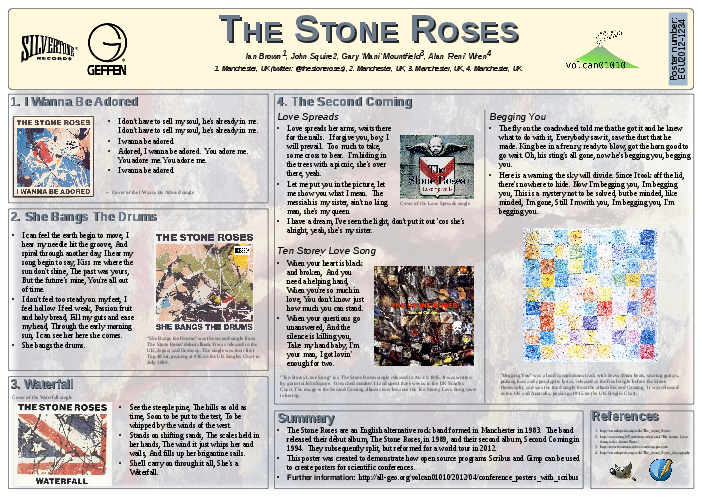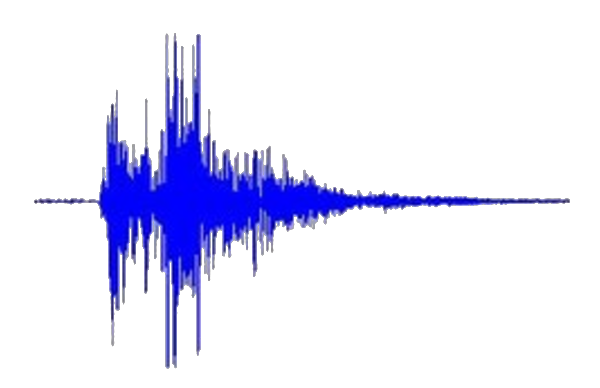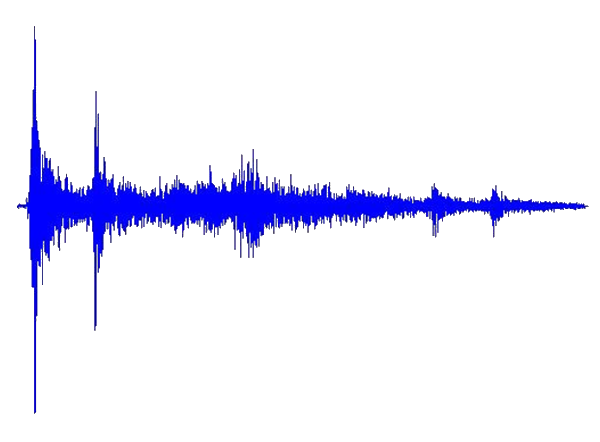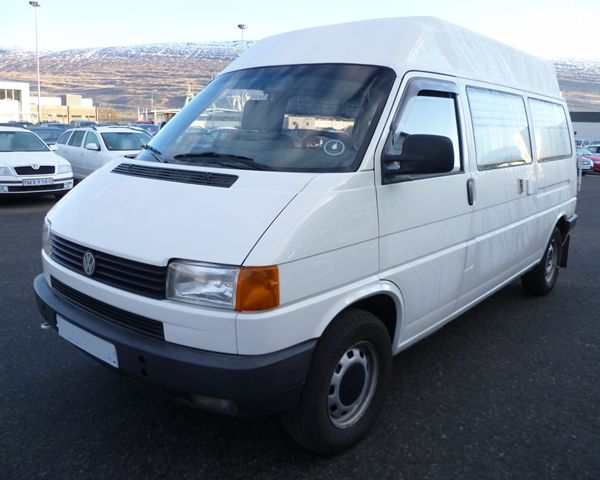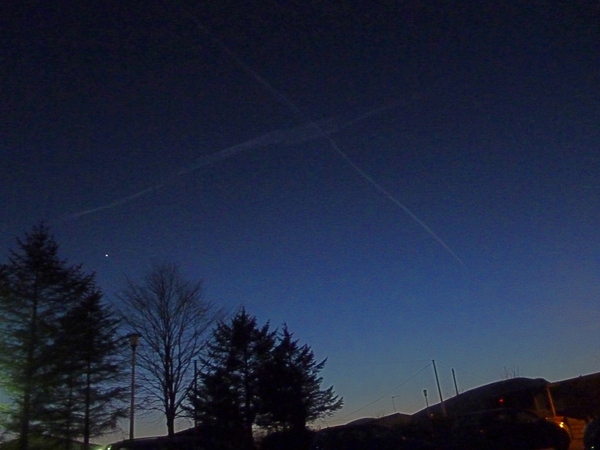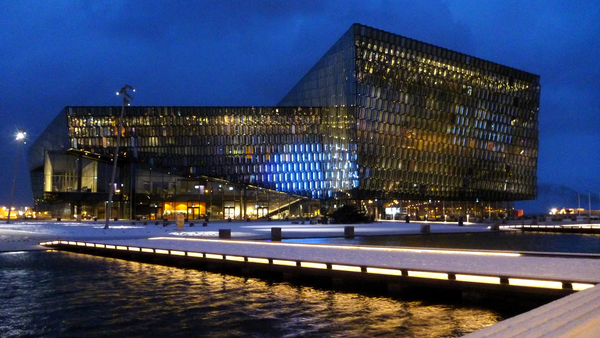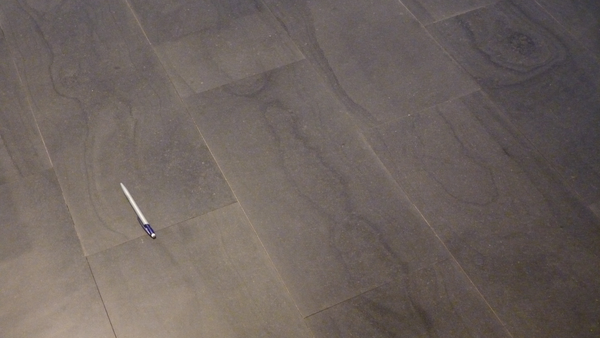Eyjafjallajökull was a relatively small eruption
This month marks the second anniversary of the eruption of Eyjafjallajökull that left millions stranded across Europe, and cost airlines an estimated €150 million a day for six days. But alarmingly, this eruption was relatively small by Icelandic standards. Much larger eruptions, perhaps 200x more powerful, are possible in Iceland and happen as frequently as a couple of times per century.
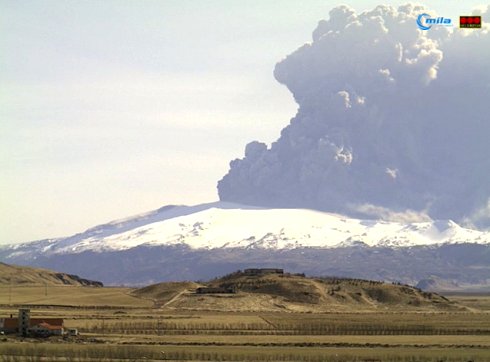
A webcam image of the plume from Eyjafjallajökull on 17 April 2010. If you think that this was bad, imagine an eruption 100 times more powerful. Source: EWA Blog
Such an eruption would dwarf that of Eyjafjallajökull, pumping out around 10,000 tonnes of tephra (broken up ash and pumice) per second, compared compared to Eyjafjallajökull’s 500 tonnes per second. The tephra-filled plume would speed upwards to over twice the height of Mount Everest and spread over areas the size of whole countries, high above trans-Atlantic air routes. Thunder would boom as powerful lightning flashed within it. In the surrounding country, day would be turned to night and hardy farmers with masks and torches would brave the choking air to round up their livestock. The fallen tephra would turn the landscape to a blacky, sandy desert.
Having seen the effects of Eyjafjallajökull in Europe, you can imagine what would happen with an eruption one hundred times more powerful: transport crippled as thousands of planes are confined to their hangers; airports turned to giant refugee camps; riots for tickets at ports and railway stations; panic buying of fuel; rotting mountains of undelivered food; masked youths swarming the gridlocked Champs Élysées as a weakened, blood-red, sun casts its last rays on the Arc de Triomphe. A lone survivor picking through the wreckage of the city to be reunited with his pregnant sweetheart and their quirky-but-lovable dog.
Grímsvötn
Hollywood and the newspapers have primed our imaginations for such carnage across the European continent, but the reality was not like that.
Yes, I said ‘was’.
We’ve already had an eruption much more powerful than Eyjafjallajökull: the Grímsvötn eruption of May 2011. Everything that I described in Iceland actually happened. Everything that I described in Europe was made up. As a rule of thumb, ~100x increase in the power (discharge rate) of a volcanic eruption results in a plume ~3 times the size. At its peak, the Grímsvötn plume reached 20 km, compared to 5-10 km for Eyjafjallajökull during much of the time that European airspace was closed. The eruption produced about twice as much tephra (~0.7 cubic kilometres vs. ~0.3 cubic kilometres) in a much shorter time (4 days vs. 39 days), so the average discharge rate was around 20x that of Eyjafjallajökull.
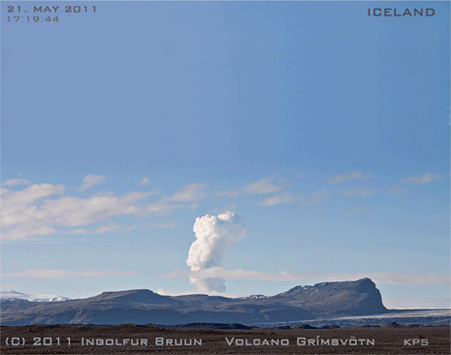
Animated GIF of the beginning of the Grímsvötn 2011 eruption. This eruption was up to 100x more powerful than Eyjafjallajökull was when it was stopping planes all over Europe, but caused much less disruption to aviation. Source: Iceland in Pictures blog
The huge disruption caused by the Eyjafjallajökull 2010 eruption was a combination of bad luck (it coincided with an unusually-long period of northerly winds that blew the tephra to Europe) and bad planning (there wasn’t much information on how much ash an aeroplane could safely fly through, so the limits were set at a very low level). The rules were changed, and as a result, it was clear when the Grímsvötn eruption began that it was not going to be a repeat of Eyjafjallajökull. In fact, the disruption in Europe was relatively minor, with just 900 out of 90,000 scheduled flights cancelled. These were mainly in Scotland, Scandinavia and Germany.
The low impact is reflected in the cultural importance of the Grímsvötn eruption, as measured by the ultimate cultural barometer: Google rankings. It was the largest eruption in Europe in 50 years, but a Google search for ‘Grímsvötn 2011‘ brings back just 844,000 results. ‘Eyjafjallajökull 2010‘ gets 4.7 million. ‘iPhone 4‘ gets over 2 billion.
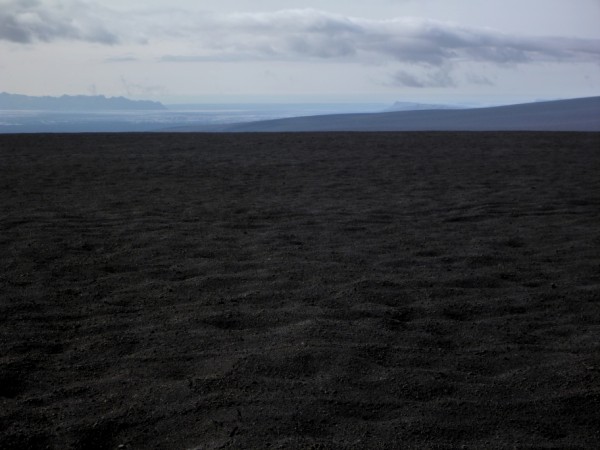
A black, sandy desert. This is the tephra deposit from Grímsvötn 2011 on top of the Vatnajökull glacier. All this should be white ice and snow. Click the image to read my post about a trip to the crater last summer.
In the eyes of the media, Eyjafjallajökull remains the default reference for an Icelandic eruption, but this view is out-of-date. The science and the organisational structures in the airline industry have improved and this is reflected in the lower impact of the Grímsvötn eruption. If the structures and technology that are in place now had been there exactly two years ago, there would have been far less disruption.
The rules are different now
The new rules for the ash concentrations through which an aircraft can fly make a huge difference to the possible effects of eruptions in Iceland. The map shows predicted ash concentrations during the Grímsvötn eruption, on 25th May 2011. All aircraft can fly in the blue areas. If an airline makes a ‘safety case’ to the Civil Aviation Authority, they can enter the grey zones and sometimes even the red zones. Whether you can accurately map the difference between the two zones is another story.
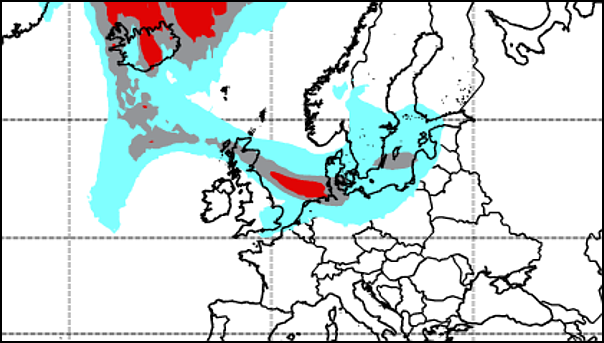
Section of map of predicted ash concentrations during G2011. Under the old flight rules, all coloured areas would have been out of bounds. This would have resulted in closure of London airports. Source: Met Office, Crown Copyright 2011. Click image for full plot.
Under the old rules, all coloured areas were no-fly zones. As the cloud moved eastwards, this would have closed airports across the whole UK on the 24th May, and again on the 27th. The whole of the UK.
This means you, London!
To me, this significant point seems to be completely ignored in discussions of Icelandic volcanism. At the time, it was drowned out by claims that the ash cloud was a ‘myth’. That Heathrow airport remained open during Grímsvötn 2011 represents progress in our handling of Icelandic eruptions. Of course, there is room for further progress to be made, and much of this will come through closer linking of satellite data to computer models in order to combine the advantages of these two distinct methods of mapping ash clouds.
Reality is less dramatic than you imagine
The problem with these imagined apocalyptic scenarios is that they project events that occur in a small region around the volcano onto locations that are much further away. They forget that London is about 1700 km from Eyjafjallajökull. It is a very long way; more than 500 miles and 500 more. Even the Proclaimers would not walk that far. The effects of even the largest eruptions are much less severe at such great distances.
The worse case scenario for Europe is a large flood-basalt type eruption, which would last for months with repeated flight disruptions and the release of abundant toxic and weather-changing gases. The Laki eruption of 1783-4 produced 14 cubic kilometers of lava and was associated with tens of thousands of deaths in Europe caused mainly by heart and respiratory problems.
Fortunately, these eruptions are rare, with only two in the past thousand years, but if one did occur, I suspect that the reality of even this would be less apocalyptic than you might imagine. You would not see whole families cut down in their prime, spluttering and bloody-mouthed. The closest analogy is a heatwave in France in 2003. It killed nearly 15,000 people there, but, to quote The Day Today, most of them were old and would have died soon anyway. This group of people are also the most at risk from a Laki-type event, but unless you worked in a hospital or were unfortunate enough to know one of the victims, the extra deaths may pass unnoticed. Furthermore, this is also a scenario where good government planning could really reduce the impact.
And Katla rumbles on…
Meanwhile, the media obsession with Katla continues, particularly following increased seismicity over the past year. The truly awesome floods that can accompany Katla eruptions are a genuine concern for Icelanders, but as far as the Europe is concerned, 16 of the 20 Katla eruptions since 920 A.D. that have been measured were similar to, or smaller than, the 2011 Grímsvötn eruption. It is therefore probable that the next Katla eruption will have similar consequences: some flight disruption, mainly in Scotland and Scandinavia, probably for 1-2 days.

Earthquakes per day at Katla since Jan 2011, showing increased activity since last summer. What it actually means is unclear. Click the image for more information.
Erik Klemetti wrote a nice article on his Wired Eruptions blog about how news websites regularly peddle fear of an Icelandic eruption . He said that Katla was the media favourite because it is: “(a) near Eyjafjallajökull; (b) hasn’t erupted in a long time; and (c) easier to pronounce.” One of his readers, Carl le Strange, left a suggestion on how to address this. I think that it is an excellent idea, and a perfect antidote to the hype surrounding the 2nd anniversary of the Eyjafjallajökull eruption.
Sometimes I think they should rename Katla into Lítileldfjallsemmunaðeinstaugarnar, that should really take care of the problem…
[…]
Oh, and that odd name would be in english “Smallvolcanothatwillonlyirritate”
Edit April 2015 – Further reading:
In the summer of 2013, we published a paper on the effects of the Grímsvötn eruption on the UK. I wrote one blog post explaining our findings that samples of various types (including some collected by citizen scientists) can map the progress of an ash cloud, and another that explained why the timings and locations agreed with predictions from computer models but the concentrations were different. Have a read to learn more.
You can also can watch the video of my 2014 Geographical Association lecture, Do Iceland’s volcanoes pose a threat to the UK?
